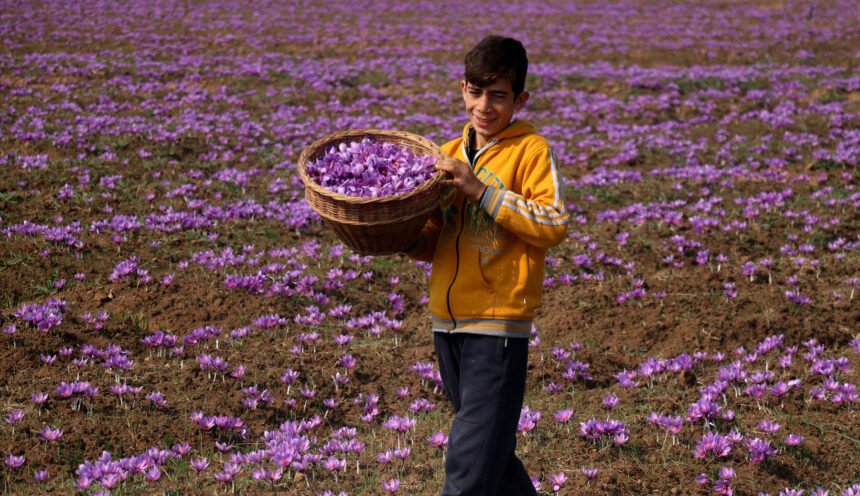National Mission on Saffron Strengthens Industry and Enhances Productivity in Kashmir
J&K Government Implements Major Reforms to Boost Saffron Production
Srinagar, Mar 25: The Jammu and Kashmir government has outlined significant measures to enhance saffron production in the region, ensuring stability in the sector and supporting local farmers.
In response to a question by MLA Justice Hasnain Masoodi in the Legislative Assembly, the government acknowledged the recent decline in saffron production and reaffirmed its commitment to revitalizing the crop through the National Mission on Saffron. This initiative focuses on value addition, Geographical Indication (GI) certification, and increasing saffron exports.
Saffron Production & Export Data
The government shared key production and export figures from recent years:
- 2021: Production stood at 17.33 metric tons (MT), with 15.59 MT exported, generating Rs 302.35 crore in production value and Rs 272.12 crore from exports.
- 2022: Production declined to 14.87 MT, exports totaled 13.38 MT, with Rs 261.38 crore in production value and Rs 235.25 crore in export revenue.
- 2023: A slight recovery was recorded with 14.94 MT produced and 13.44 MT exported, valued at Rs 291.33 crore and Rs 262.2 crore, respectively.
Concerns were raised over the steep decline in saffron prices, which dropped from Rs 22,500 per kilogram to just Rs 2,000 per kilogram, causing significant financial losses for farmers. However, the government assured that the sector had stabilized under the National Mission on Saffron, with the cultivated area remaining at 3,715 hectares since 2010-11.
Challenges & Government Interventions
A study conducted by Sher-e-Kashmir University of Agricultural Sciences and Technology (SKUAST-K) identified several reasons for the decline, including high cultivation costs, low productivity, outdated farming techniques, and changing weather patterns.
To address these challenges, the government initiated the Economic Revival of the Saffron Sector in 2010-11, resulting in the rejuvenation of 2,573.73 hectares of saffron fields. Productivity has since improved from 2.50 kg/ha in 2009-10 to 5.14 kg/ha in 2020-21, with recent figures maintaining a steady 4.42 kg/ha in 2022-23.
New Infrastructure & Market Support
To further strengthen the saffron industry, the government has:
- Constructed the Spice Park/India International Kashmir Saffron Trading Center (IIKSTC) at Dussu Pampore, at an estimated cost of Rs 37.81 crore, to improve market access for farmers.
- Introduced an e-auction facility at IIKSTC, enabling growers to secure better prices for their produce.
With these reforms, the J&K government reaffirmed its commitment to enhancing saffron production, boosting exports, and safeguarding the livelihoods of saffron farmers.

